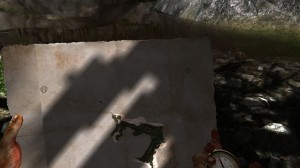This was written for June-July’s Blogs of the Round Table, on NPCs in video games.
Perhaps you’re meant to have meaningful, deep interactions with characters in games that can actually speak. But they’re all just robots. Interact in a certain way, as a blank avatar, and they will love or hate you regardless of who you are. They are obviously a series of lines responding to inputs.
Or, if my avatar is a specific character, they’re responding in a story that I don’t feel is mine. I don’t have intimate relationships with characters in books either. I might like them, or admire their actions, but I don’t have deep meaningful interactions with them.
Ralen Hlaalo is different, because he is a cupboard.
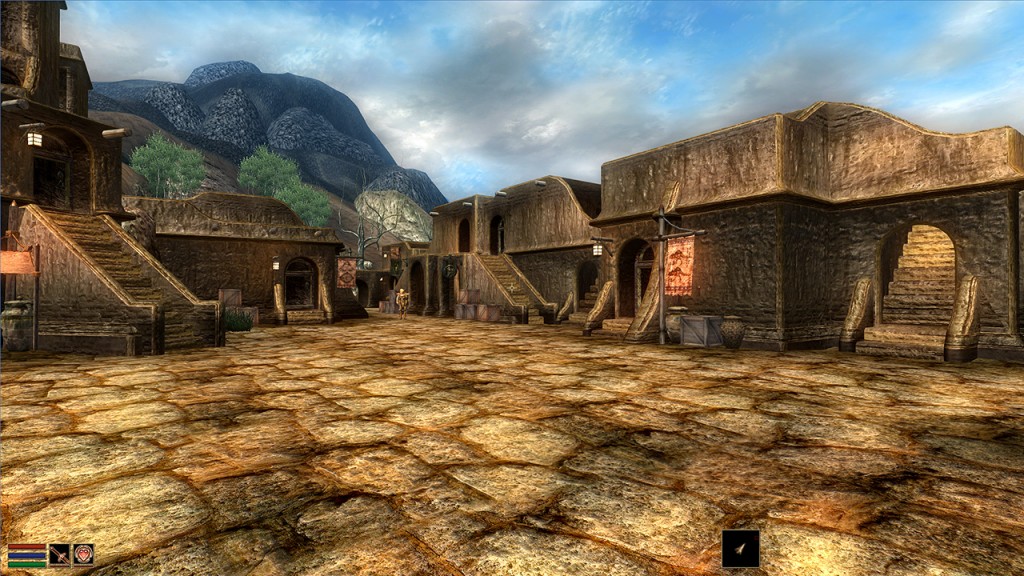
Ralen Hlaalo is dead, to begin with. He lived in Balmora, a town on the south-west side of the island of Morrowind, to the north of Vvardenfell, where the Dunmer live. At the beginning of Morrowind, the third Elder Scrolls game, you arrive by boat in the tiny township of Seyda Neen. From there, you’re directed to Balmora, which is – if you want it to be – a hub area for at least the first few levels of your game. It has a Mages Guild, a Fighters Guild and a Thieves Guild; it has good transport connections and is conveniently located for exploration.
It’s also the ancestral seat of one of the three families that rule Morrowind: House Hlaalu. They’re into diplomacy and trade and sneaky business. They’re also mega-rich, which makes them targets. Ralen Hlaalo has been murdered, and his body lies face up on the carpet of his luxurious home west of the river. His maid stands in her room, waiting for you to pick the locks or acquire the keys to the house and ask her about what happened here.
Later, when your Sneak gets high enough, you can probably pilfer the contents of her jewellery box and her copies of Vivec’s sermons off her shelf, and then shut the door again, knowing she doesn’t need food or conversation or even the little luxuries the game originally gives her.
The Hlaalo manor is one of the better options for a starting house, once you can get into it. It contains a vast array of containers – crates, barrels, chests – and a bed where you can sleep in peace; it has a wall of excellent shelves you can use, if you’d like, to display the many treasures you’ll acquire over the course of your time in Morrowind; it’s full of stuff you can just take right now and fence to the Khajit down the road, and no one will stop to ask what you’re doing with all those glass bowls and tableware that used to belong to that nice Mr Hlaalo, so recently murdered. You can get a decent start in life from Ralen’s end.
But even after you’ve stripped the clothes from his corpse, his body will remain. It will be there forever. Later on, you will come to realise it is a more powerful asset than almost anything else in the game when it comes to boosting your income. Because Ralen Hlaalo is an infinite cupboard.
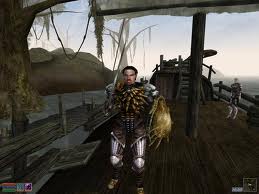
A few words on how Morrowind’s encumbrance and travel systems work: they are designed to frustrate you. They are designed to be difficult to navigate. Morrowind is a walkable game, made before “walking simulator” became a term of vague disapproval. It wants you to walk between travel points, not bamf around a map with fast travel. It wants you to plan journeys. It wants you to discover familiar paths and shortcuts, to get to know the landscape intimately, to be excited about the first time you travel somewhere. I have walked south from Balmora so many times I could do it in my sleep. Whenever I move house in the real world I start a new game of Morrowind so I can walk from Seyda Neen to Balmora and from Balmora to Hla Oad, just for the familiarity.
There are a few systems for fast travel. There are boats in seaside towns, each one of which visits a limited number of locations; you may have to chain trips together. There are silt striders, tall weird insect buses that visit a few landlocked cities each. There are Mages Guilds, each one of which has a teleporter inside to access all the others. Then there are teleportation spells: Divine Intervention, which will transport you to the nearest Imperial Cult shrine, and Almsivi Intervention, which takes you to the nearest Tribunal temple.
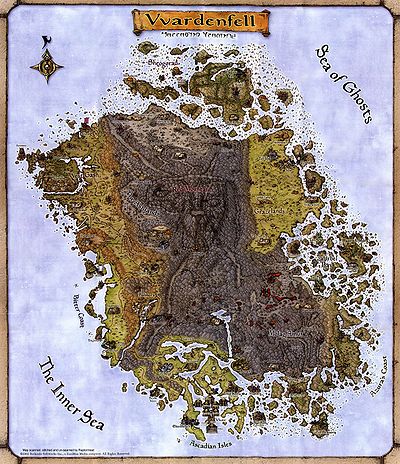
And there is a network of forts littered around the landscape, not one of which is ever relevant to the story, each one containing one teleport pylon that can take you to two other forts, and one lockstone that opens it up as a destination. Also normally they contain significant numbers of orcs. Opening them up is the sort of quest that matters only because travel is a limited, finite resource. It makes Morrowind feel incredibly dated. It is also one of the reasons why it has stuck with so many people as a game with such a powerful sense of place.
Encumbrance is a problem. A lot of the best loot in Morrowind is heavy – raw ebony, raw glass, Dwemer pots and scrap metal – and the average dungeon is large and contains many shiny things that, if you are a looter like me, you will itch to possess.
You don’t just slow down when you’re carrying too much loot for your character’s stats: you stop completely. You can’t drag yourself out of the dungeon to the teleport. You can’t do anything. You can swing your sword a bit but that’s not much good. You can’t take it all with you. You have to unpack.
But there is one other option. There is a pair of spells that you can use to actually go where you want to go, without needing to walk when you get there. Mark lets you pick one point on the map, just one. Recall lets you transport there instantly. Regardless of how much you’re carrying.
What happens at the other end? You have to unpack immediately into chests or crates or boxes, but those things themselves have a finite limit on how much they can contain. You can’t put all your things in one cupboard, because the cupboard is just not big enough. Unless the cupboard is Ralen Hlaalo.
Ralen can take as much ebony and glass and assorted swords and bandit armour as you can loot. He will even obligingly cover his nakedness – assuming you have stripped him to sell his expensive clothes – with whatever arms and armour you happen to have looted. He does not rot. He does not require gifts or moral decisions or tribute. He will not send you on a quest, beyond avenging his death, which you’re free not to do with no consequences. You can set your Mark spell within reach of his glassy eyes, load him up with your spare things on arrival, then jaunt down to the pawnbroker where you originally sold all his fancy glassware and, in a few trips with some awkward 24-hour rests in the middle, be significantly richer for little extra effort. He is obligingly calm the entire time.
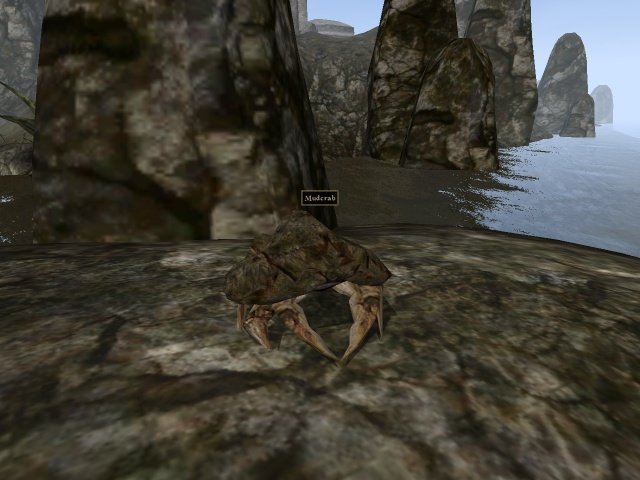
In one game, I appreciated his use so much I summoned him a giant talking mudcrab friend – the mudcrab is the richest merchant in the game, and normally lives on an inconveniently distant island to the east of a Dwemer ruin, but you can use the console to position him wherever you’d like.
It is the only time I have ever cheated in Morrowind. I’d like to tell you it was so that Ralen wouldn’t be alone. Honestly: I did it all for the gold.
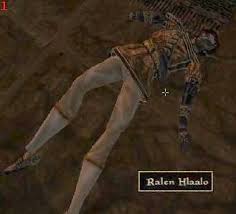
But by that time, I didn’t need the gold. I had more than 300,000 gold. There is nothing in Morrowind that costs even half that much. I had crates of alchemical ingredients and the skill to create any potion I wanted in qualities better than I could buy. I had one of every helmet in the game, carefully displayed on one of the sets of shelves. I had all 36 of Vivec’s sermons, stacked on the long dining table. I had Azura’s Star and Mehrunes’ Razer and the Fork of Horripilation. I had stacks of legendary weapons and the best light, medium and heavy armour in the game. I was the leader of the Mages, Thieves and Fighters Guilds, the head of House Hlaalu, one of the highest ranked members of both the Temple and the Imperial Cult, well on my way to being declared the Nerevarine. I had a giant, talking mudcrab filling half the space in my hallway, occasionally obstructing the door and making weird chittering noises, because I wanted more gold. My best friend was a cupboard.
Ralen Hlaalo didn’t judge me.
Ralen Hlaalo is the only NPC that I can recall having a relationship with that was sustained, reinforced, by the game’s systems. I return to him time and time again, every time I play Morrowind: I loot his house, I steal from his maid, I sleep in his bed, I strip his corpse. He is not a cipher or a character. He is a system. He is a cupboard. He is the most memorable NPC in my twenty-odd years of gaming, because he is the only one that never pretended to be human.
